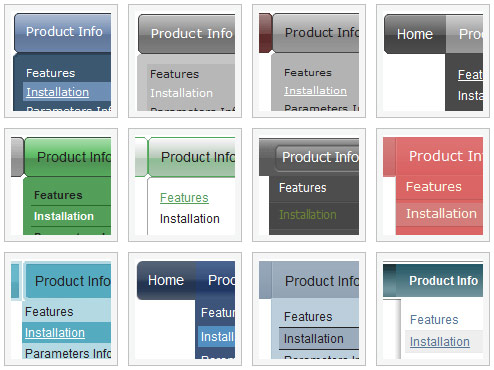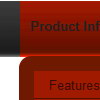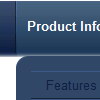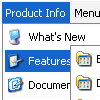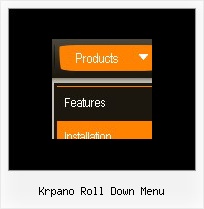Recent Questions
Q: I have downloaded the trail version of java menu source, and I am getting script errors.
I am working with the deluxe menu.
Actions:а line 15
Character 9
Access denied
file://C:\Program Files\Deluxe
Menus\deluxe-menu\deluxe-tuner\data\deluxe-menu\toolbar\toolbar.html
I uninstalled, cleared all cache and temporary files, restarted the computer, reinstalled and I still get the same message.
I am convinced this program is exactly what I need, but one step at a time.
A: I suppose that you're using Windows 2000.
We have some problems with Tuner on this OS.
Unfortunately we didn't fix the issue with Windows 2000 yet.
Try to delete all content from toolbar.html file.
C:/Program Files/DeluxeMenus/deluxe-menu/deluxe-tuner/data/deluxe-tree/toolbar/toolbar.html
C:/Program Files/DeluxeMenus/deluxe-menu/deluxe-tuner/data/deluxe-menu/toolbar/toolbar.html
C:/Program Files/DeluxeMenus/deluxe-menu/deluxe-tuner/data/deluxe-tabs/toolbar/toolbar.html
Q: We recently started using the Deluxe Menu with Multiple Website License
I have a question when I tried creating a google sitemap xml using java menu creator.
All I get is a sitemap for the home page? Would the Deluxe Menu have anything do with the sitemap generators not being able to crawl all the other pages on the site?
A: Deluxe Menu will generate sitemap using links in your menu only.
Q: In our application we want to have the drop down menu configured inside IFrame but still visible on the page. Currently the menu slides down inside the iframe,
Is this scenario configurable.
A: Deluxe Menu don't work with <IFrame> objects. They work with<frameset> objects only.
All they can to do with <IFrame> is to loadpages into it.
Q: I want to make a Treemenu with AJAX.
If I look in the dhtml menu tool preview all is good.
But if I put it in a html, it does not function anymore.
I'm using Version 3.2.6.12 (you sent me a while ago)
A: There is a bug in the current version of Deluxe Tuner. It doesn't saveengine file for AJAX menu - dtree_ajax.js.
Please, copy it manually now. We'll correct this bug in the nextversion.
You should also add tWorkPath parameter in your html page.
<!-- Deluxe Tree -->
<noscript><a href="http://deluxe-tree.com">dhtml menu tool by Deluxe-Tree.com</a></noscript>
<script type="text/javascript"> var tWorkPath="menu.files/";</script>
<script type="text/javascript" src="menu.files/dtree.js"></script>
<!-- (c) 2006, http://deluxe-tree.com -->

